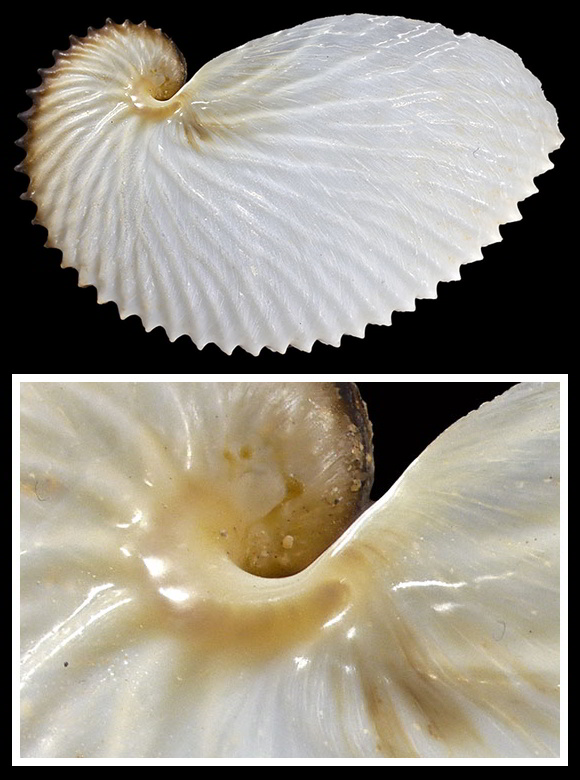
Worldwide tropical and subtropical waters. Epipelagic, between the surface and 50m deep. In shallow waters during the night, deeper during the day. The egg case is an unilocular gondola, thin, fragile and lightweight.
Above: beachstormed, Leucate, Occitania, S. France. 58mm. Original pictures provided by S. Clanzig (FR).
– (CC BY-NC-SA) –
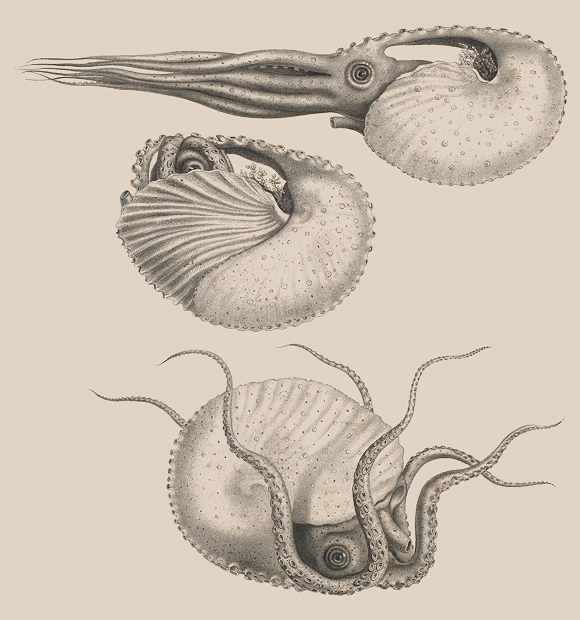
Female of Argonauta argo with its eggcase in J.-C. Chenu: Illustrations conchyliologiques, Paris, no date, via BHL.
The figure on top displays a specimen swimming under water with its egg-case, keel foremost, securely held by the two translucent membranous webs, one per side, which conform to it. The second figure shows the animal at rest, while half-retracting the holding membranas. The shell appears. The bottom-figure shows the animal in an intermediate position.
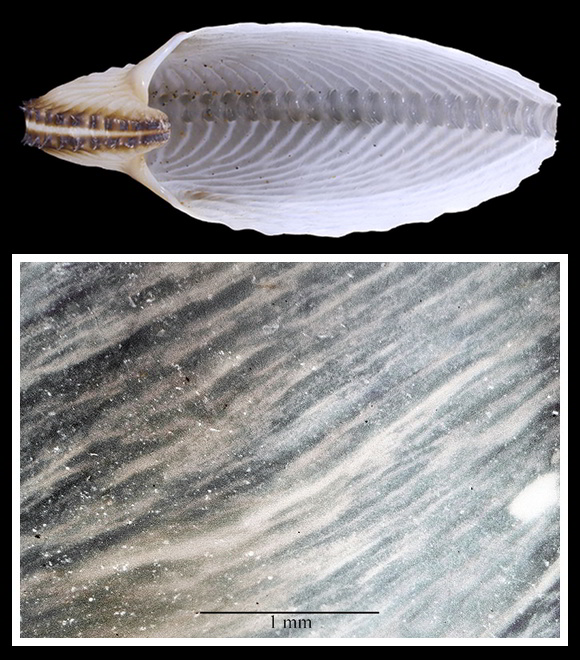
– (CC BY-NC-SA) –
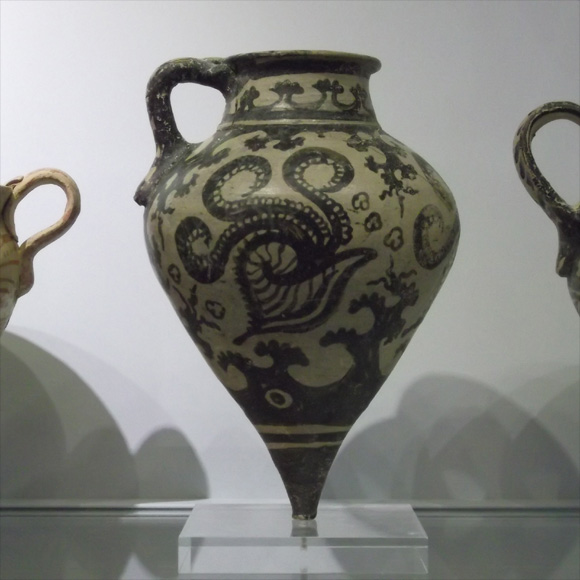
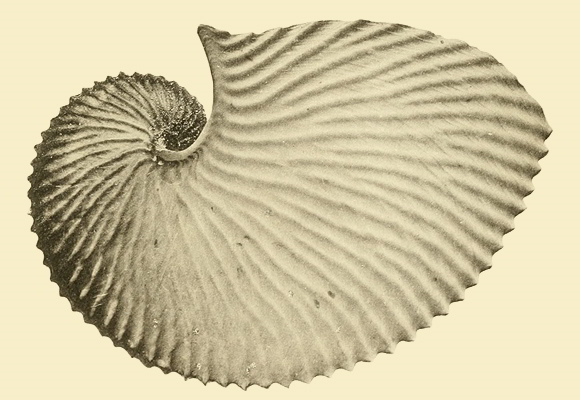
« A. argo is the largest species of the group, and the one that has the – comparatively – thicker shell ; its hooks, or columellas, are strongly curved, and its reliefs, much protruding, are widely spaced. The aperture is very expanded and the hooks are close to the spire. When young, the hooks are flexuous. »
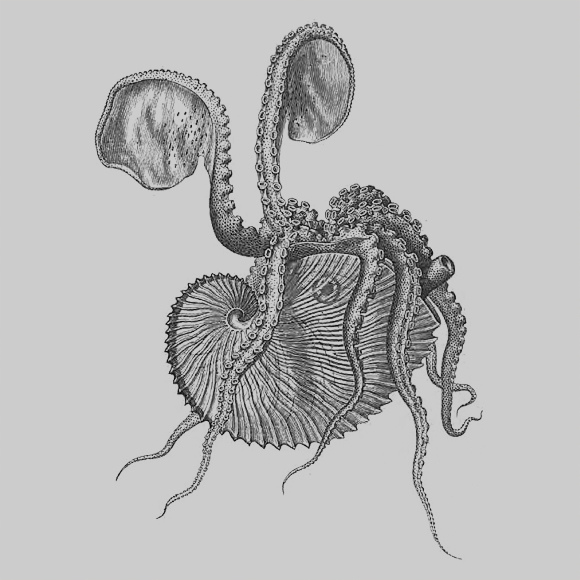
A. Argo in Chenu: op. cit. with the two mebraneous tentacles,
which are used to maintain the shell, held aloft.
« Var. mediterranea. This is the common form in Mediterranean, which I have issued under the names A. mediterranea and A. secunda. The hooks are as curved as in young stage ; the test is thinner than in the typical A. argo and the reliefs are more numerous and close together. »
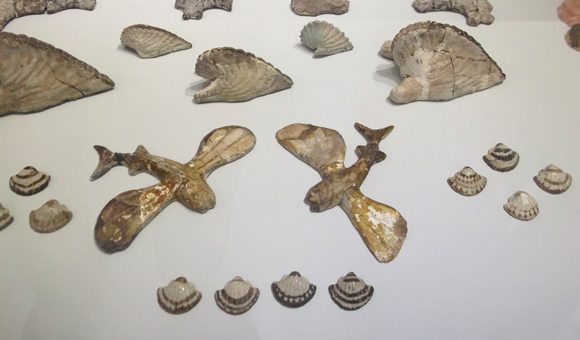
Argonauta argo var. “mediterranea”, along with other marine models, found in Knossos temple repositories, N. Crete, 1650-1550 BC. Heraklion Archaeological Museum.
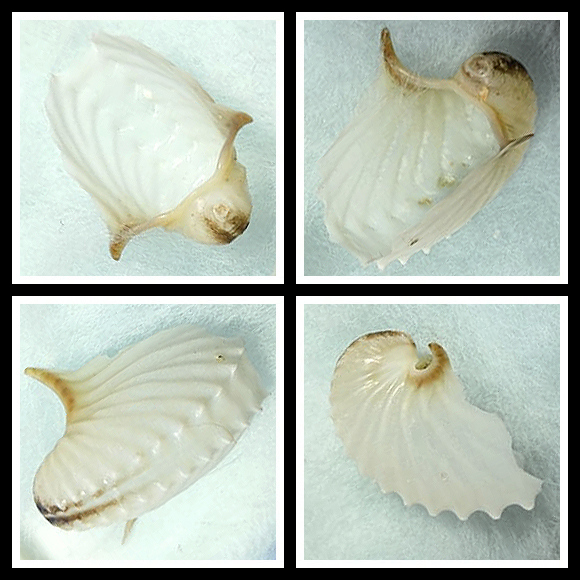
Original pictures provided by A. di Bella (IT).
– (CC BY-NC-SA) –
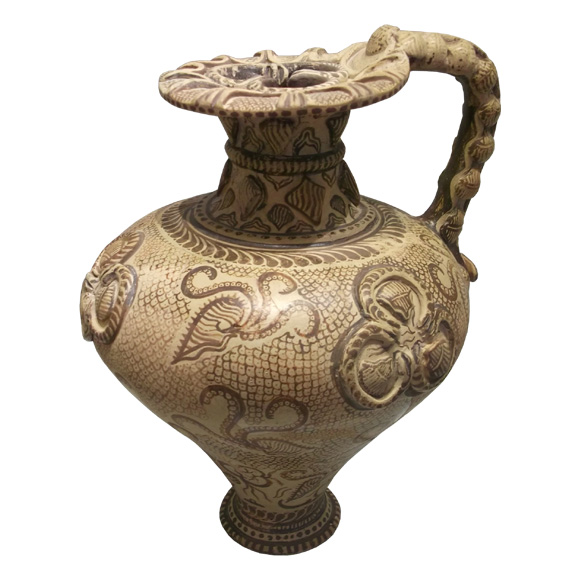
Ewer found at Poros, Saronic gulf, Greece, 1500-1450 BC. Heraklion Archaeological Museum. The Argonautae pictured on this piece look like the var. “sebae” Monterosato: « more lengthened than A. argo s.s. ».
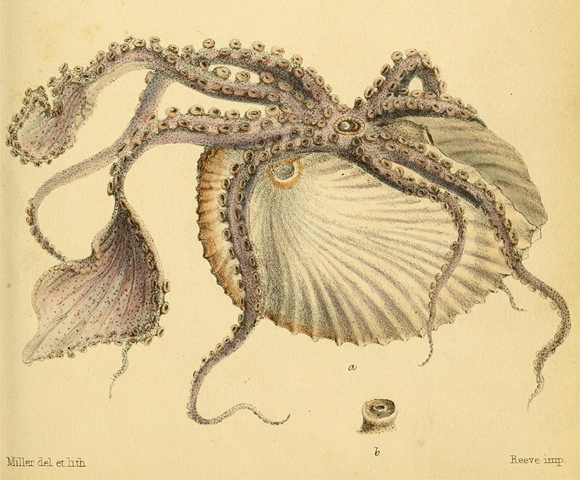
« View of the animal having relaxed its prehensile embrace of the shell and about to die, showing the eight arms with two rows of suckers on each, the two front of which are represented with the membranous webs contracting, to the left ; the mouth and horny mandibles, in the centre ; and the funnel or organ of secretion, to the right. – From a specimen taken alive at Messina by the Rev. L. B. Larking. »
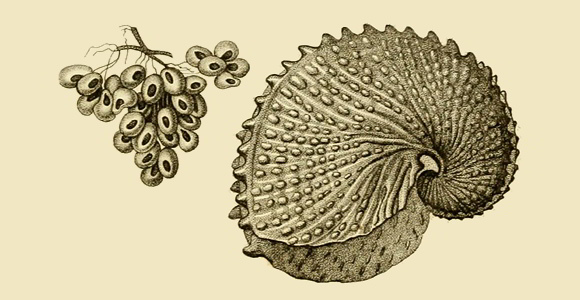
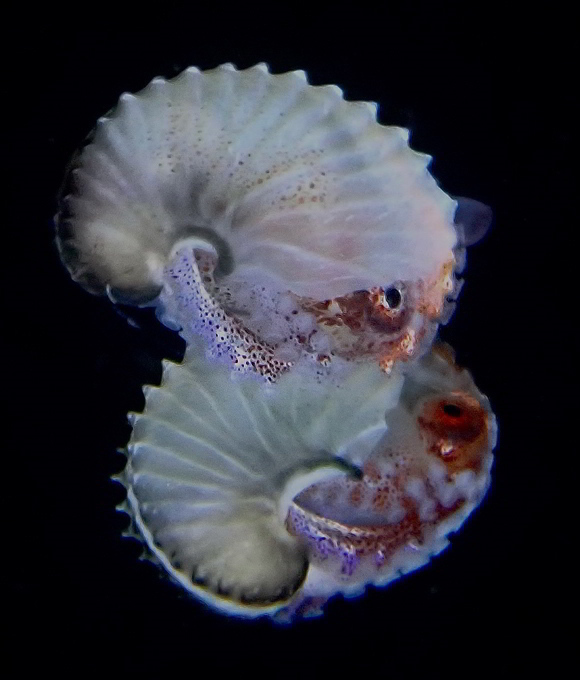
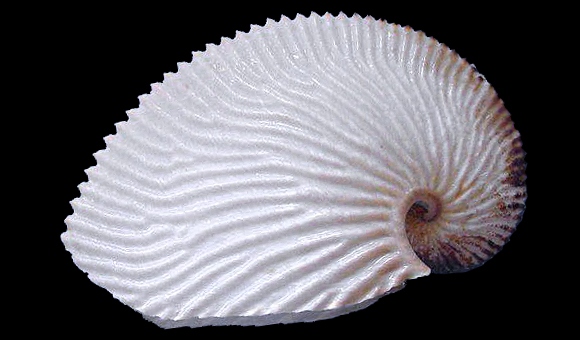
Original picture provided by P. Ovalis (GR).
– (CC BY-NC-SA) –
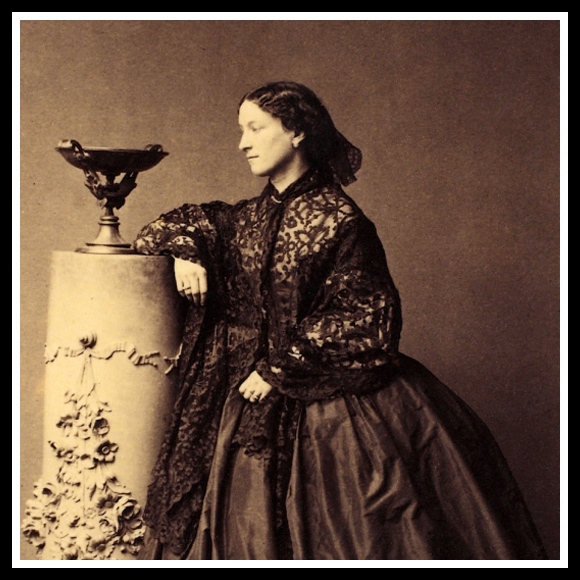
In Argonautidae, the sexual dimorphism is considerably marked. The males are very small (in argo they barely reach the 0.8 inch in size) while the females are much larger. The latter build their gondolae not only for the eggs, but also for housing: they live inside, whether they are visited by a male or not. This is a french scientist, Jeanne Villepreux-Power (1794-1871, pictured above), who solved the mystery of gondola construction. In order to better study the marine life in natural conditions, Mrs Villepreux-Power invented what is nowadays known as the aquarium.